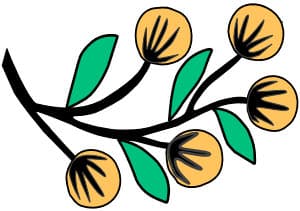| WARNING: Aboriginal and Torres Strait Islander people are warned that this website contain images, voices and names of people who have passed away. |
Indigenous Symbols, Icons and Imagery
- Aboriginal Symbols
———————————— - Man Woman Child
- Human Activity
- Tools & Weapons
———————————— - Bush Food
- Bush Tomato
- Wild Passionfruit
- Bush Medicine
- Wildlife
- Goanna
- Kangaroo
- Witchetty Grub
————————————
- Landscape & Country
- Rain & Water
————————————
Indigenous Australia – Iconography and Symbols
Aboriginal people have lived in Australia for many thousands of years. One of the secrets to their success was their knowledge of nature and ‘bush food’ (‘bush tucker’).
Among the many plants that were collected for food are berries, bush berries.
Among the berries collected for bush tucker are a type of berry known as bush raisins, also known as bush sultanas, and bush tomatoes.
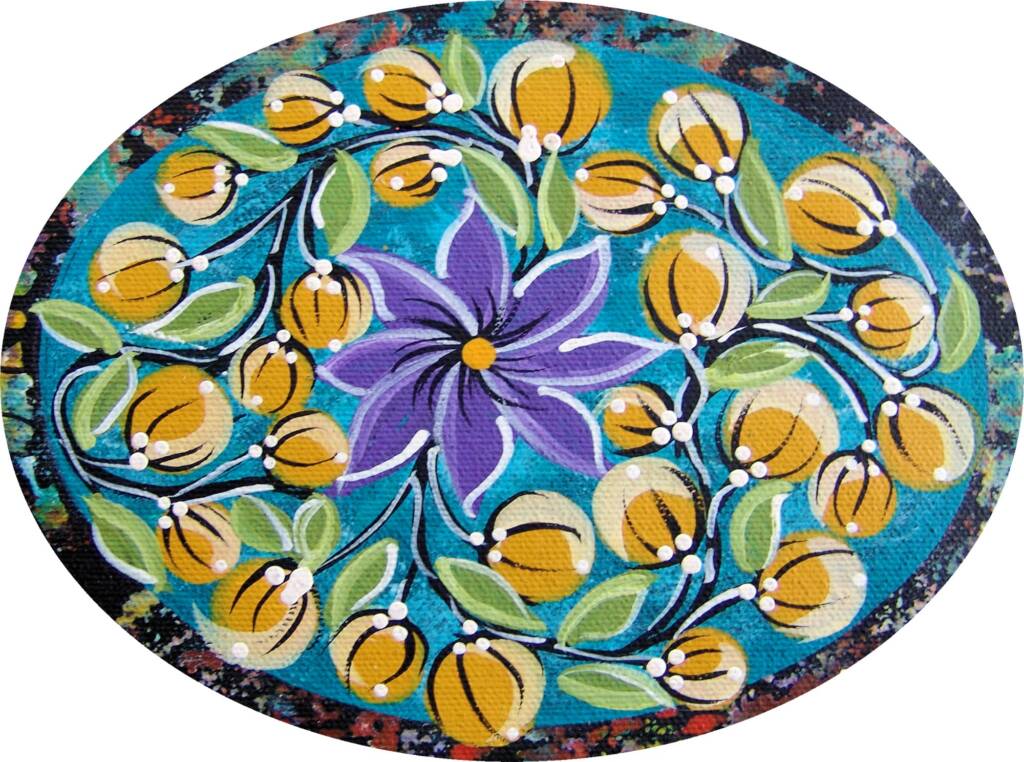
Often depicted in paintings about bush tucker or women collecting bush food, it is one of the popular symbols that appear in Aboriginal art.
In the following extract from a painting titled Women teaching children about bush tucker by Trephina Sultan Thanguwa, among the many symbols shown are depiction of the bush raisin (bush tomato).
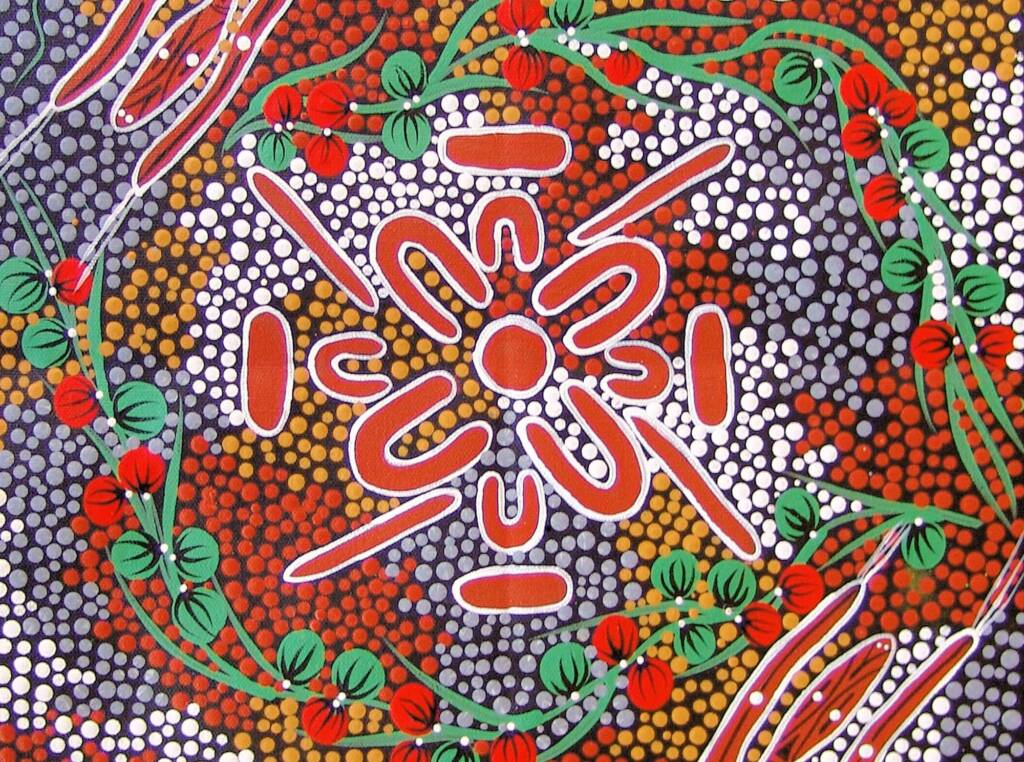
In this extract from another painting by Trephina Sultan Thanguwa, you can also see the honey ants encircled by bush raisins.
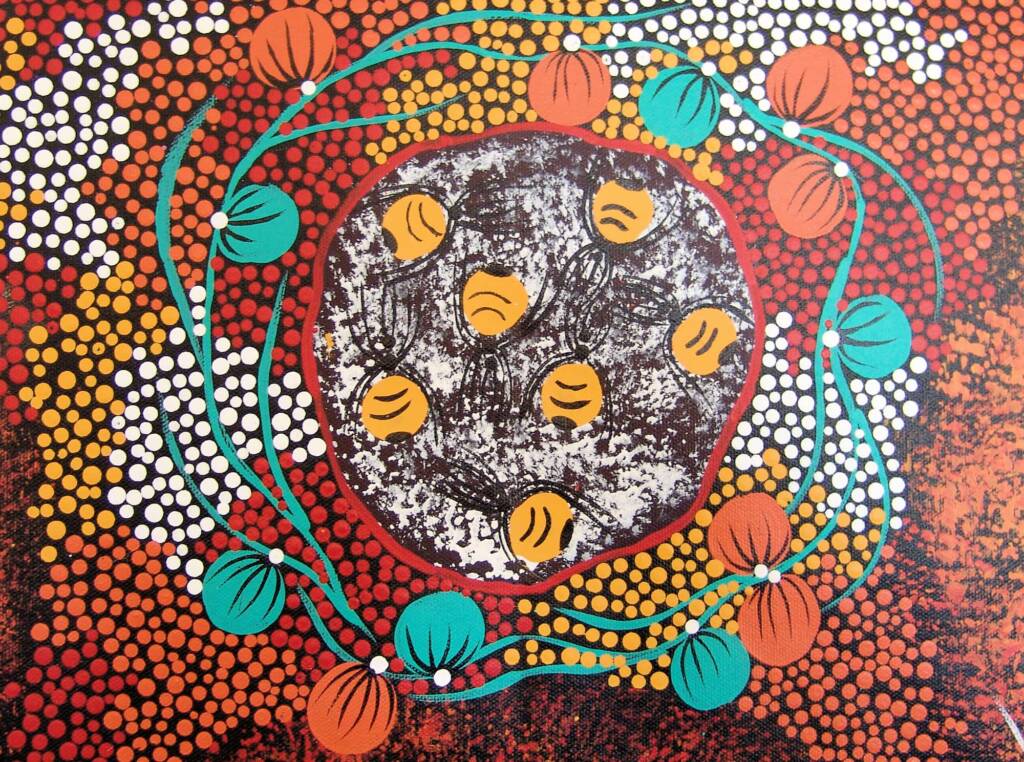
In this painting Families hunting and gathering, you can see the bush raisins a staple that is included in paintings about bush tucker.
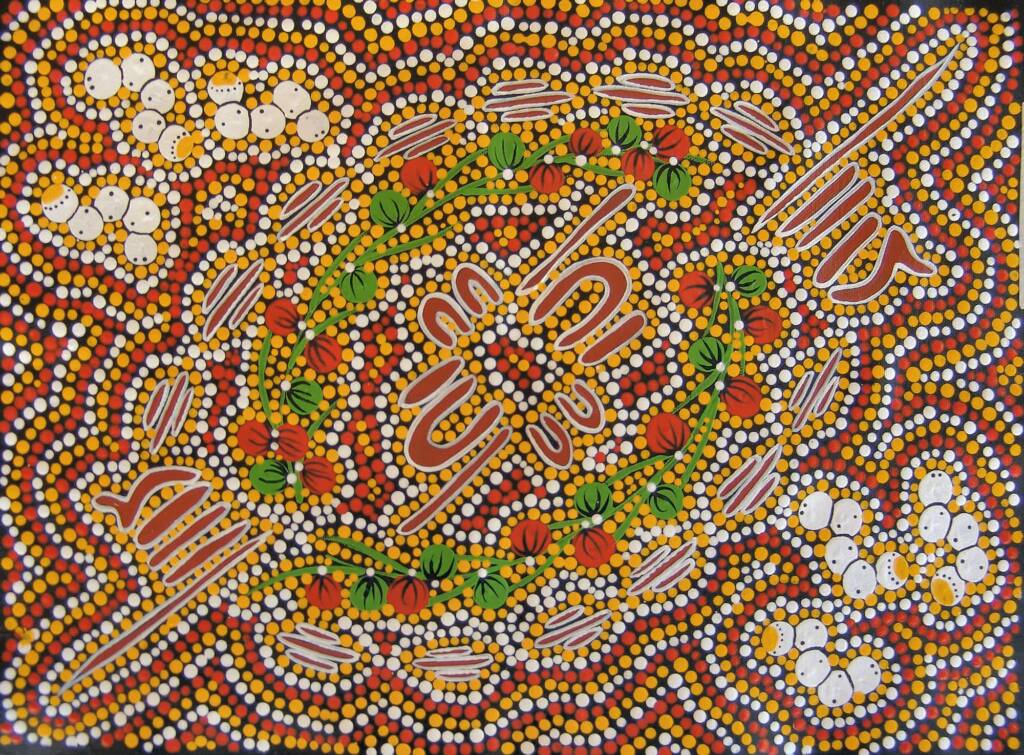
The fruit are a tiny tomato-like berry, which turn from green to yellow when ripe. When purchased commercially in the dried form, either whole or ground, the fruit appear as a brownish-red colour with a taste that is similar to caramelized sun-dried tomatoes.
- Akudjura — Bush Tomato
- Kingdom: Plantae
- Division: Magnoliophyta
- Class: Magnoliopsida
- Order: Solanales
- Family: Solanaceae
- Genus: Solanum
- Species: S. centrale
- Language Name
- English name: Bush tomato, bush raisin, bush sultana.
- Arrernte name: Merne akatyerre (the Arrernte term ‘merne’ means ‘fruit or nut’).
- Eastern Arrernte: Awele-awele, Alperrantyeye.
- Alyawarr name: Akatjurra, Akudjurra, Akajura, Akadjura
- Pitjantjatjara: Kampurarpa, Kampurrarpa, Kutjera
Check out our page in the Flora & Fauna section: Solanum and Bush Tomato
